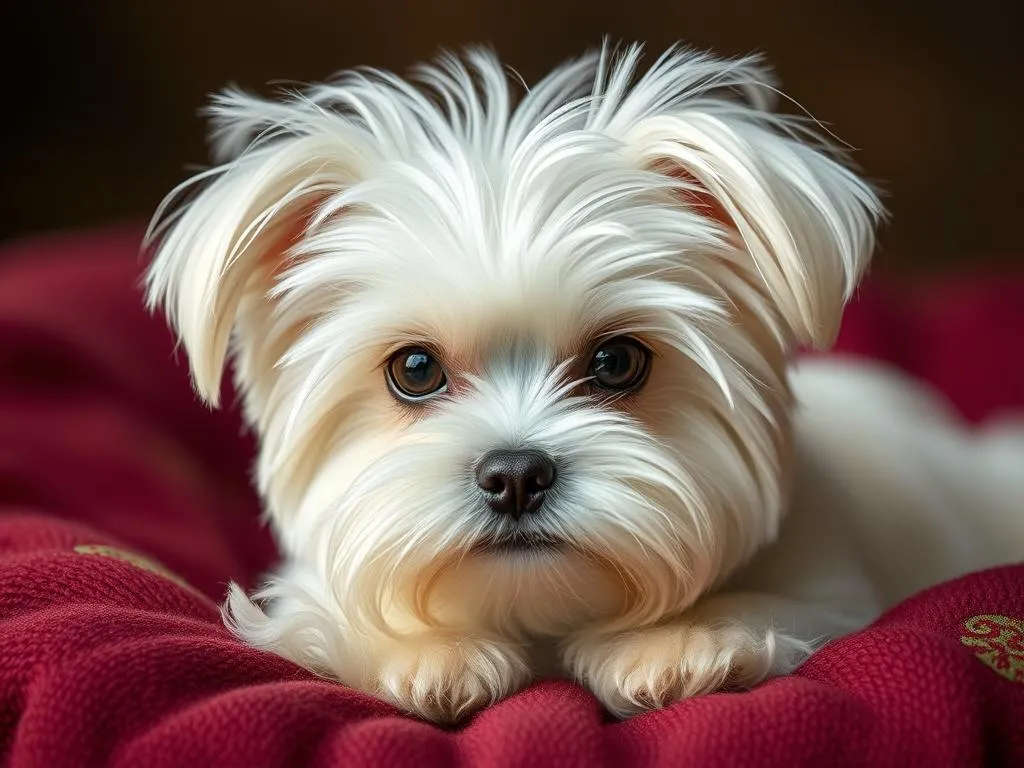
Introduction
The charm and companionship of dogs have made them one of the most beloved pets around the world. With a diverse range of breeds, each possessing unique traits and characteristics, potential pet owners have plenty of options to consider. Among these breeds, the Teacup Maltese stands out for its petite size and delightful personality.
The Teacup Maltese is a smaller version of the standard Maltese, known for its luxurious coat and playful demeanor. These tiny dogs are not just adorable; they also offer a plethora of personality traits that make them suitable companions for various lifestyles. In this article, we will delve into the characteristics, care requirements, and overall suitability of the Teacup Maltese for potential pet owners.
Understanding Dog Breeds
Definition of Dog Breeds
A dog breed is a specific group of domestic dogs with a common ancestry and similar characteristics. Each breed is typically bred for particular traits, such as size, temperament, and purpose, making them distinct from one another. Understanding breed characteristics is crucial for prospective dog owners, as it helps them choose a breed that aligns with their lifestyle and preferences.
The Role of Size in Dog Breeds
Dog breeds come in various sizes, categorized into small, medium, large, and giant breeds. Each size category has its own unique set of characteristics and care requirements. The term “teacup” refers to an even smaller size within the small breed category, often characterized by dogs weighing between 2 to 5 pounds. The Teacup Maltese falls within this teacup classification, making it a popular choice for those looking for a tiny, affectionate companion.
Teacup Maltese: An Overview
History of the Maltese Breed
The origins of the Maltese breed can be traced back to the Mediterranean region, where they were cherished as companions by the aristocrats of ancient civilizations. They were primarily bred for their companionship rather than specific working roles. Over time, breeders began to develop smaller variations of the Maltese, leading to the emergence of the Teacup Maltese. This tiny version has gained immense popularity due to its portability and affectionate nature.
Physical Characteristics
The Teacup Maltese is known for its delicate appearance. Typically, these dogs stand about 7 to 9 inches tall and weigh between 2 to 5 pounds. Their long, flowing coat is usually white, silky, and requires regular grooming to maintain its luxurious appearance. Distinctive features include dark, expressive eyes and drop ears that frame their sweet faces, contributing to their endearing look.
Temperament and Behavior
General Temperament of the Teacup Maltese
The Teacup Maltese is renowned for its friendly and playful demeanor. These dogs are incredibly affectionate and thrive on human interaction, often forming strong bonds with their owners. Their lively nature makes them great companions, as they enjoy playtime and cuddling equally. However, socialization is essential to ensure they develop a well-rounded temperament.
Common Behavioral Traits
Teacup Maltese dogs are known for their loyalty and adaptability. They tend to be alert and may bark to alert their owners of any unusual activity. While their barking is often seen as a protective instinct, it can become excessive if not properly managed. Potential behavioral issues, such as separation anxiety, may arise if these dogs are left alone for extended periods. Addressing these concerns early on through training and socialization can help mitigate unwanted behaviors.
Care and Maintenance
Grooming Needs
Grooming is a vital aspect of caring for a Teacup Maltese. Their long, silky coat requires regular brushing, ideally every day, to prevent matting and tangles. Professional grooming every few weeks is also recommended to keep their coat healthy and looking its best. Regular dental care is essential as well, as small breeds are prone to dental issues.
Dietary Requirements
Feeding a Teacup Maltese requires careful consideration. Due to their small size, they have specific dietary needs to ensure they receive the necessary nutrients without overfeeding. High-quality, small-breed dog food is recommended, and feeding schedules should be consistent, typically involving two to three small meals per day. Owners should consult with their veterinarian to determine the best diet for their particular dog.
Exercise and Activity Needs
Despite their small size, Teacup Maltese dogs require regular exercise. Short walks and playtime are essential to keep them active and healthy. Mental stimulation is equally important, as these intelligent dogs enjoy interactive toys and games. Engaging their minds will help prevent boredom, which can lead to behavioral issues.
Health Considerations
Like all breeds, the Teacup Maltese is prone to certain health issues. Common concerns include dental problems, patellar luxation (knee displacement), and heart issues. Regular veterinary check-ups and vaccinations are crucial to maintaining their health. Early detection and treatment of any health issues can significantly improve their quality of life.
Training and Socialization
Basic Training Tips
Training a Teacup Maltese is essential to ensure they develop good manners and obedience. Positive reinforcement methods work best with this breed, as they respond well to praise and rewards. Basic commands such as sit, stay, and come should be taught early on. Consistency and patience are key during the training process, as small dogs can sometimes exhibit stubbornness.
Socialization Strategies
Socializing a Teacup Maltese is critical to their development. Introducing them to various environments, people, and other animals will help them become well-adjusted pets. Puppy classes can be beneficial for socialization, providing controlled environments for interaction. Gradual exposure to different situations will build their confidence and reduce anxiety in new settings.
Living with a Teacup Maltese
Ideal Living Conditions
The Teacup Maltese is well-suited for apartment living due to its small size. However, they require a safe and comfortable environment. Owners should ensure that their home is free from hazards, as small dogs are more susceptible to accidents. A designated area for play and rest will help them feel secure and content.
Family Compatibility
Teacup Maltese dogs can thrive in various family dynamics. They generally get along well with children and other pets, provided they are properly socialized. However, due to their small size, supervision is necessary when interacting with young children to prevent accidental injuries. Assessing a family’s lifestyle and energy level is important to ensure a good match.
Choosing a Teacup Maltese
Where to Find a Teacup Maltese
When searching for a Teacup Maltese, potential owners should be cautious about where they acquire their dog. Reputable breeders who prioritize the health and well-being of their animals are the best option. Pet stores may not always provide accurate information about the dog’s health history or lineage. Additionally, considering adoption or rescue options can provide a loving home to a dog in need.
What to Look For When Selecting a Puppy
When selecting a Teacup Maltese puppy, it’s essential to conduct health checks and obtain documentation regarding vaccinations and health screenings. Meeting the puppy in person can also help assess their personality and temperament. Look for a puppy that is playful, curious, and shows signs of good health, such as clear eyes and a shiny coat.
Conclusion
The Teacup Maltese is a delightful breed, offering affection and companionship in a tiny package. With their friendly nature, adaptability, and charming appearance, it’s no wonder they have become a popular choice for many dog lovers. However, potential owners should carefully consider their lifestyle and the specific needs of this breed before making a commitment.
In summary, the Teacup Maltese requires proper care, socialization, and training to thrive as a beloved family member. With the right attention and love, these tiny dogs can bring immense joy and companionship to their owners’ lives.









